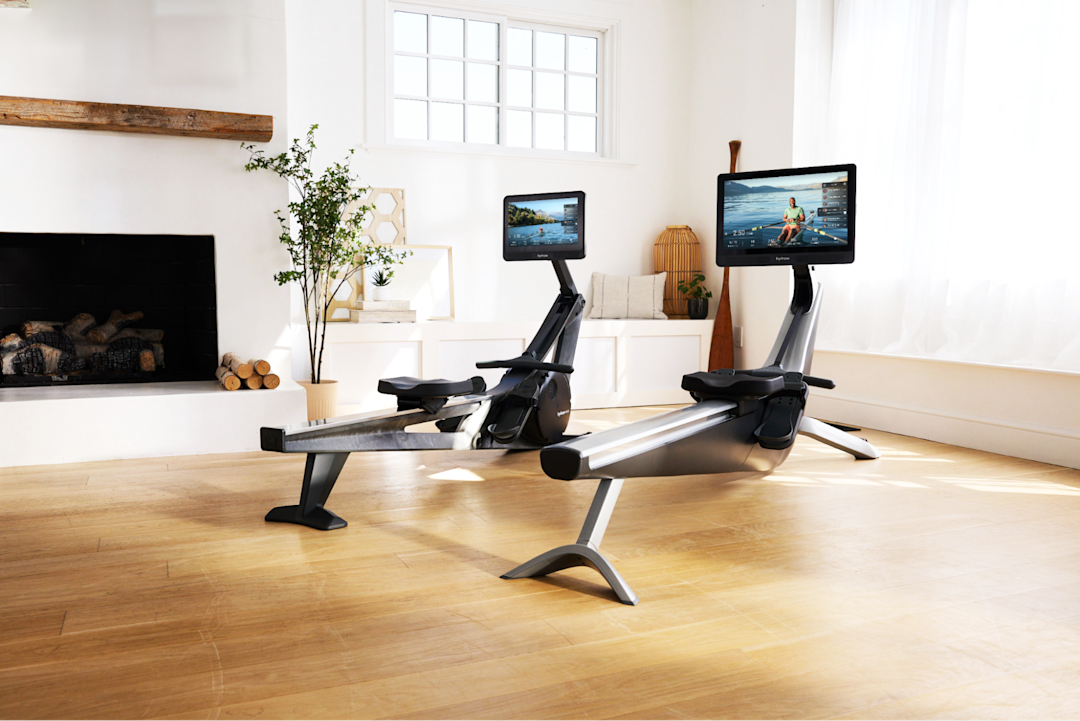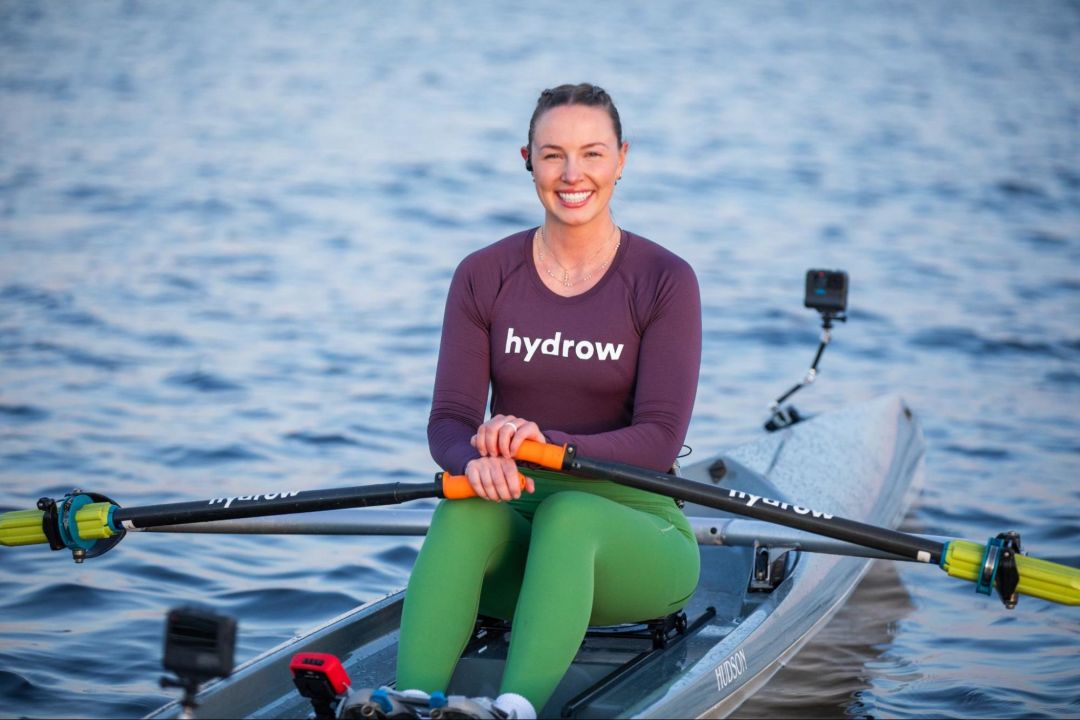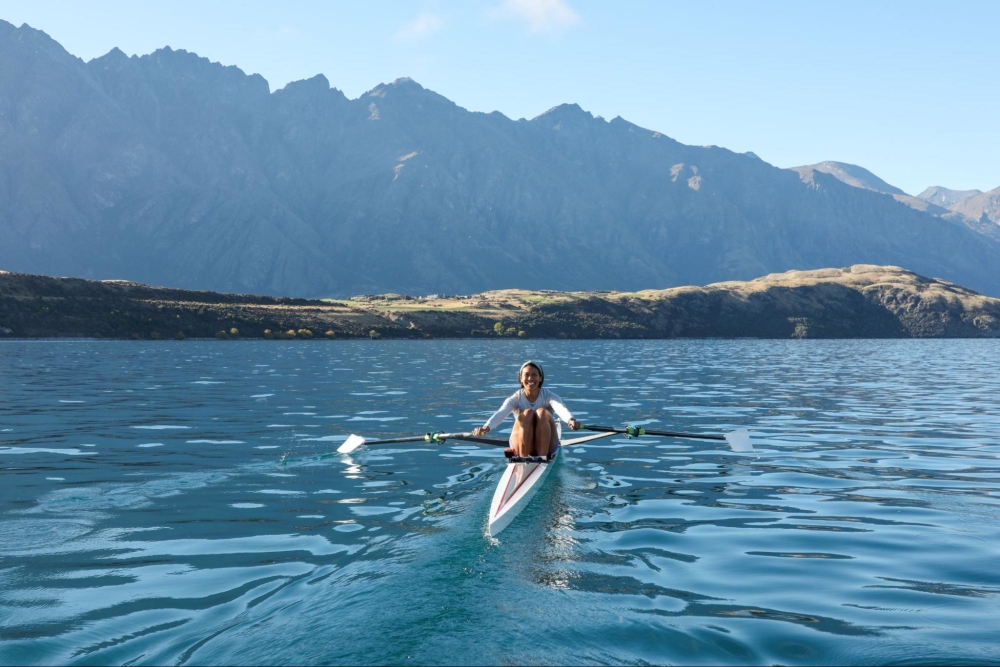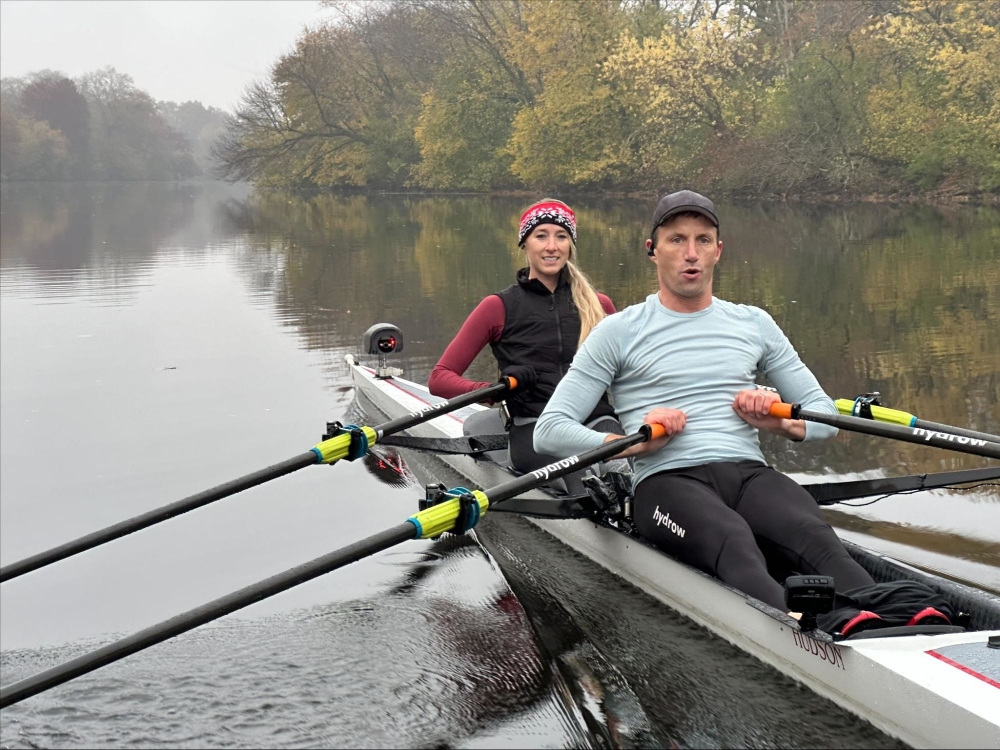What Are the Biggest Differences Between Indoor and Outdoor Rowing?

Whether you’re an avid rower looking for an indoor alternative, a rowing machine enthusiast looking to wet your oars on the water, or someone who is new to both sports, you may be wondering about the key differences between indoor and outdoor rowing.
In this blog, we’ll cover what you need to keep in mind as you try each sport or alternate between them, including similarities and differences across their:
Let’s dive in!
1. Environment
The biggest difference between indoor and outdoor rowing is, of course, the environment in which you practice each sport. When you’re rowing on the water, there are more factors to keep in mind that can affect your experience and how you row, such as wind, water conditions, inclement weather, tides, and the need to share the water with other boaters.
Navigating these conditions will require you to continually keep yourself balanced by adding pressure to one blade or another or adjusting your hands, which is something you don’t have to do if you are using a rowing machine at home. And, in extreme cases, you may decide that you don’t want to row at all in unfavorable conditions.
As pieces of indoor workout equipment, rowing machines offer a more consistent experience. So long as you have enough space in your home for a rowing machine or have access to a rowing machine at a gym, you’ll be able to jump on and start rowing without much adaptation.
2. Equipment
Your equipment needs will also vary when it comes to indoor and outdoor rowing. At home, you’ll pretty much just need a rowing machine, beyond extras like rowing shoes and gloves.
On-the-water rowing requires access to multiple pieces of equipment, including a scull and oars. These are two pretty major investments, so you’ll likely start off by borrowing the boats and oars at your local rowing club, whether you take an introductory class or sign up to be a member.
However, similar to the way you may feel when you sit down on an exercise bike with a seat too high, you may want to eventually invest in your own equipment that better suits your height and body composition as you get more comfortable with rowing. The first purchase rowers typically make is their own set of oars, as having one the right size for you will positively affect your rowing experience.
For both indoor and outdoor rowing, you’ll want socks, a water bottle, and appropriate clothing for your environment.
3. Technique
The fantastic thing about indoor and outdoor rowing is that even though they look visually different, your form and muscle engagement are the same across both types of rowing. However, because outdoor rowing does require putting your blades in and out of the water, subtle differences do exist:
1. Wider hands during your stroke
At the Catch, your hands will be visually wider when sculling, and your core and hands will rotate to the port or starboard side of the boat as you roll into the Catch when sweeping. On an indoor rower, your body will remain centered and your hands will work back and forth on a horizontal plane.
2. Hand placement on the handle
You’ll also see a small difference with your hand placement. With the rowing machine, your hands are consistently gripping the single handle. When sculling on the water, there will be a moment where your hands cross over in the Recovery phase. This is only experienced momentarily and quickly resembles indoor rowing again as your hands clear each other and make your way up the slide.
3. Navigating the water and maintaining balance
Rowers will also feel some differences in the way they interact with the water and navigate their blade placement and depth, along with finding the resistance from the water instead of getting it naturally from bracing on a rowing machine. There is also a balance component of being in a boat that you have to consider with the way you hold your body and use your arms.
The great thing about trying both indoor and outdoor rowing is that you can reinforce your good technique both on and off the water, so doing both together is mutually beneficial to the way you practice each sport.
“Rowing on the water has its own challenges, and I now fully appreciate the reality of the technical side of rowing and adapting to varied rowing conditions, after only experiencing smooth, virtual waters. I learned something new every time I boated, gaining confidence, making new friends, and being positively challenged on so many levels every week.”
— Matt Peachey, Hydrow Member
4. Metrics and coaching
Similar to your form, the metrics that you use are interchangeable on and off the water—though the way those metrics are communicated to you does differ. As you row on the water, a speed coach will give you your strokes per minute, split, and stroke count—basically everything but watts.
Depending on how advanced your rowing machine is, you should also have access to these same types of metrics on your screen in front of you, helping you keep pace with your instructor and monitor your split time.
The level of coaching you receive also largely depends on the rowing machine you buy or the class you’re taking. A rowing machine like Hydrow, for example, provides on-machine workout classes you can stream that features instruction from Athletes. Whether you’re doing more technique work in a warm-up or cooldown or need to be reminded of your posture and form in a workout, you’ll follow the Athlete’s instructions. If you’re looking for feedback on your form and technique, you’ll want to partner with a 1:1 personal coach.
On the water, a coach will run you through many similar drills and workouts, and you’ll have the benefit of getting real-time feedback on your form and performance.

Considering a Hydrow rowing machine? We tackle all your burning questions in our FAQ guide.
5. Training control
If you are looking for consistent training, you’ll also have to consider how independent you want your rowing experience to be. When you’re learning to row on the water, you’ll likely start in a boat with multiple people. This means you have to move with the crew and work as a team, so you can’t really do your own thing. You can eventually move into smaller sculls with fewer people, but this will take time and training.
With a rowing machine, on the other hand, you’re on your own. You can choose the length, intensity, and type of rowing workout you do, stop and start when you want, and decide when you want to push yourself or take it easy.
6. Community
When it comes to community, there are more similarities than differences between using a rowing machine and rowing on the water—if you know where to look! Boathouses and rowing clubs are a great place to meet new people with similar interests, and there is a sense of accountability that comes with knowing you’ll let your team down if you don’t show up to take your seat in a larger boat.
While you are working out alone on a rowing machine, there are ways to connect with other people. For example, Hydrow rowing machines feature a leaderboard that allows you to compete with other members who have completed the same row. We also host weekly live rows that let you see where you stack up in real-time. Hydrow also invites all members to join our Facebook group, Hydrow Training Camp, where you can ask questions, learn the stories of other members, and find motivation to row.
The rowing community can be a very powerful one, as it’s full of people who are looking to grow and are willing to push themselves to achieve their goals. When you have other people around that challenge you and hold you to that standard, you are going to advance. It’s also great that people around the world are taught to row the same way—that commonality helps people row together in a boat even if they’ve never been out together before.

Did You Know?
Over 90% of Hydrow members are still active one year later.
7. Accessibility
When rowing outdoors, the biggest thing you need access to is, well, water. Beyond that, you’ll also want to find a local rowing club that has the equipment you need and the ability to bring on and train new rowers. Another thing to consider is how you’ll time your rows to jive with favorable water conditions and your daily work schedule, especially if you need to travel to and from your boathouse.
Rowing indoors requires access to a rowing machine, whether you have one in your home or are using one at the gym. You also have the freedom to row when you want, as you don’t need to travel to a boathouse and keep water conditions in mind before jumping on your machine.
8. Scenery
Another key difference between indoor and outdoor rowing is, of course, the scenery! When you’re rowing on the water, you’re able to spend some time in nature, with your beautiful surroundings hopefully distracting you from your burning muscles and sweating forehead.
Spending time in nature has also been found to positively impact cognitive function and mental well-being, according to Dr. Amy S. McDonnell, with nature immersion helping you recover more efficiently from stress and replenish depleted attentional reserves.
That doesn’t mean you have to sacrifice scenery completely with a rowing machine, though. State-of-the-art rowing machines like Hydrow feature virtual rowing workouts where you are able to follow an Athlete rowing on a real beautiful waterway from around the world. This also lets you vary your scenery, whether you want to row among Alaskan glaciers, along charming Prague waterways, or beneath towering mountains in New Zealand.
Indoor vs. outdoor rowing: Which is right for you?
Indoor and outdoor rowing offer a ton of benefits, whether you’re considering trying one or the other or incorporating both into your fitness routine. Indoor rowing is great for convenience, data tracking, and consistent training, while outdoor rowing is loved for its skills enhancement, coaching, and nature settings.
What’s so wonderful about these sports is that they’re great when done in conjunction. Some people may feel intimidated by rowing clubs and may want to spend some time honing their technique and getting comfortable on a rowing machine before they feel empowered enough to join the community. On the other hand, people who started with outdoor rowing may enjoy their ability to focus on their form on a rowing machine even when they don’t have access to the water.
No matter which option you choose, rowing is a fantastic addition to any fitness routine. And, if you’re looking to invest in a rowing machine for your home, be sure to consider Hydrow. Our rowing machines are the perfect addition to any home gym, giving you an immersive and total-body workout in just 20 minutes a day.
Hydrow’s extensive library of workout content is led by our team of world-class and Olympic Athletes and filmed in stunning locations around the world. Whether you’re looking to do a rowing workout or cross-train with yoga, Pilates, and circuit training, you’ll be transported to gorgeous global destinations that keep you motivated to come back again and again.
Learn more about the benefits of a Hydrow rowing machine today!

Explore Hydrow
Learn more about how you can transform your fitness routine with a rowing machine.









